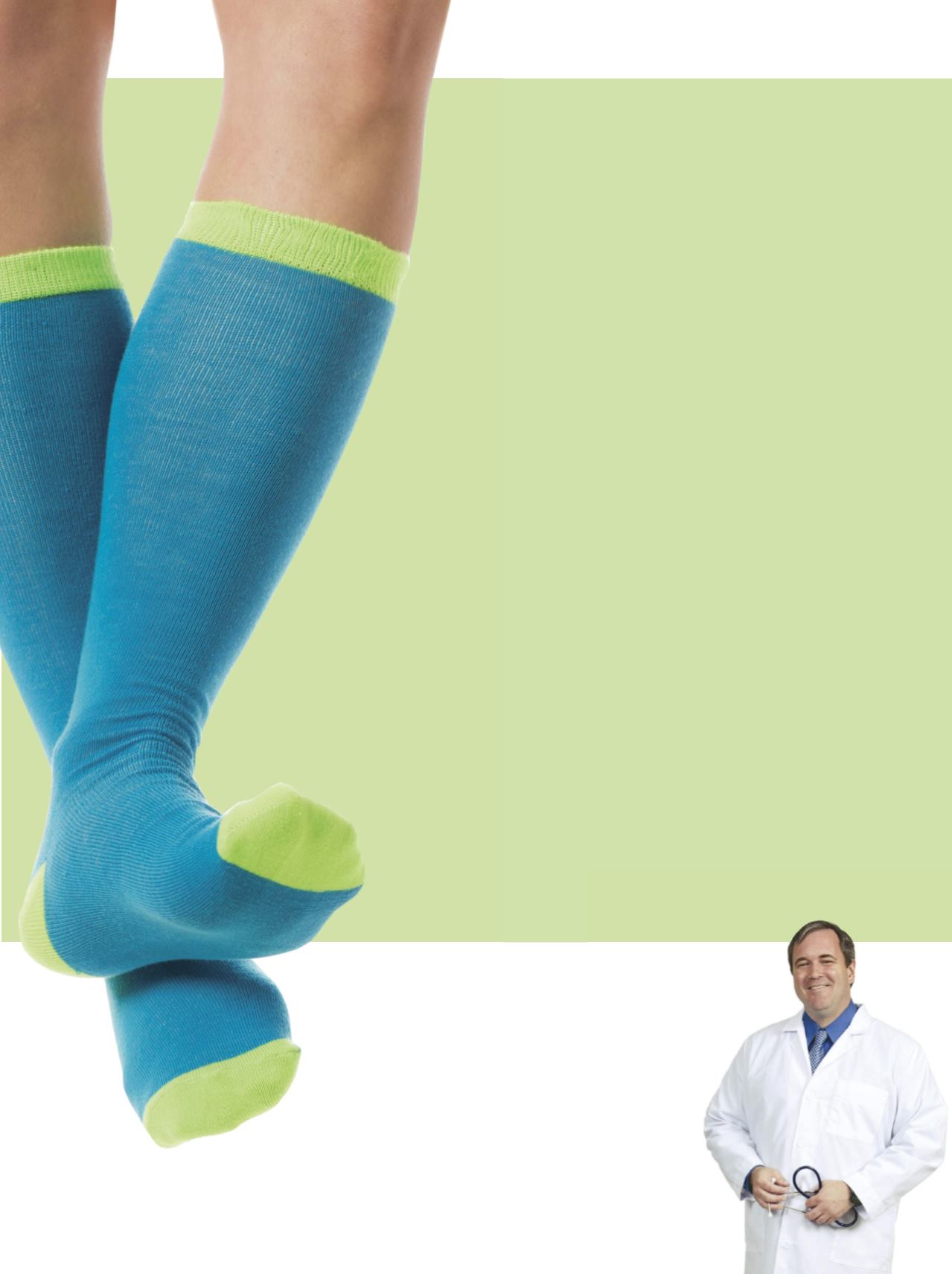
Peripheral arterial disease
Achy legs
may signal
artery
disease
WHEN BLOOD
vessels feeding the heart
get narrow or clogged,
doctors call it coronary
artery disease (CAD).
When the same thing hap-
pens to blood vessels away
from the heart, it’s called
peripheral arterial disease
(PAD). It’s also known as
peripheral vascular disease.
PAD and CAD are both
caused by atherosclerosis, in
which fat, cholesterol and other
substances slowly build up inside
arteries. That makes it harder for
oxygen-rich blood to feed the body’s
tissues.
Both conditions pose similar dan-
gers: increased risk of heart attack and
stroke. And since PAD usually occurs in
the lower body, it can also affect legs and
feet in sometimes life-altering ways.
For example, leg muscles and other
tissues starved for blood can become
painful, particularly during exertion. That
can turn everyday things like walking
around the block or climbing stairs into
painful chores.
PAD-slowed circulation can also make
infections more likely and harder to
heal. In the worst cases, PAD can cause
gangrene, leading to amputations.
Besides leg pain, other common signs
and symptoms of PAD include:
• Numbness, weakness or heavy-feeling
legs
• Burning, aching feet while resting
• Skin color changes or hair loss on
the legs or feet
• Foot sores that don’t heal or heal
slowly
Often, though, people with PAD have
no signs or symptoms.
Is it PAD?
To see if you have PAD, your doctor will
ask about your medical history, discuss
any symptoms and do an exam.
He or she may take your pulse at your
legs and feet and compare blood pressure
readings from your arms to readings from
your ankles—known as an ankle-brachial
index test.
If these results point to PAD, your
doctor may do tests to find a blockage.
Ultrasound, magnetic resonance imaging
or computed tomography scans are often
used.
Ways to feel better
If you have PAD, treatment usually
involves changing some daily habits and
taking medicine.
Changes may include recommenda-
tions to:
• Stop smoking, if you smoke. Smokers
are more likely to have pain with PAD.
If you have trouble quitting, talk with
your doctor.
• Manage blood pressure, cholesterol
and—if you have diabetes—blood
glucose levels. Your doctor may suggest
medications to help.
• Eat a healthy diet and exercise. Both
help keep blood vessels healthy.
Your doctor may also suggest medica-
tions to reduce pain while walking and to
lower your risk for blood clots.
If these measures aren’t enough,
surgery to widen or bypass narrowed or
blocked blood vessels may be needed.
Sources: American Heart Association; National Heart,
Lung, and Blood Institute
If you’re experiencing achy legs,
contact Jackson Hospital’s new vascular specialist
and surgeon, Brian Sellers, DO. Dr. Sellers offers
a variety of services, including comprehensive
management of peripheral arterial disease,
carotid stenosis, venous disease, aortic aneu-
rysms, and visceral and renal artery stenosis.
Dr. Sellers sees patients at Jackson Clinic
Vascular Surgery, located at 1758 Park Place,
Suite 300. To make an appointment, please call
334-293-8922
.


